
DLeonis/iStock/Getty Images
Pears have a tender, slightly grainy texture and a sweet taste that is pleasant enjoyed as is or made into a tart or compote. Unfortunately, the fruit does not last long. Pears rot easily and quickly, so if you have purchased a large quantity of pears, it is a good idea to preserve some of them. One flavorful and simple way to preserve your pears is to dry them for future use. You can enjoy the dehydrated pears as a healthy snack or rehydrate them later for use in a recipe.
Preparation
Mix together 1 gallon water and 4 tsp. ascorbic acid. Pears discolor within a few minutes after being cut and the acid solution will prevent the pear slices from turning an unappetizing shade of brown.
Peel the pears and core them.
Cut each peeled and cored pear into 1/2-inch-thick slices, then place the slices into the acid solution while you cut the others.
Oven Drying
Preheat the oven to 160 degrees Fahrenheit. If your oven does not have a setting lower than 200 degrees, use the "Warm" setting.
Drain the pear slices and place them onto the baking sheet in a single layer.
Insert the racks into the oven. Dry the pear slices at or around 160 degrees Fahrenheit for three hours. After three hours, reduce the heat to 130 degrees Fahrenheit and continue drying the slices for five more hours or until they are flexible but with little or no moisture.
Remove the baking sheet from the oven and allow the pear slices to cool completely.
Place the dried slices into resealable plastic bags or containers until you are ready to enjoy them.
Dehydrator Drying
Drain the pear slices and place them onto the dehydrating racks in a single layer.
Insert the racks into the food dehydrator. Dry the pear slices at or around 160 degrees Fahrenheit for three hours. After three hours, reduce the heat to 130 degrees Fahrenheit and continue drying the slices for five more hours or until they are flexible but with little or no moisture.
Remove the dehydrator racks and allow the pear slices to cool completely.
Place the slices into resealable plastic bags or containers until you are ready to enjoy them.
Related Articles

How to Dehydrate Kiwi

How Can I Preserve Peaches Without ...
How Long Does It Take to Dry Apples in ...

How to Dry Limes

How to Dry Pineapple in a Dehydrator

How to Dry Sliced Oranges in the Oven

How to Dry Raspberries
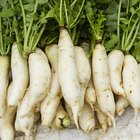
How to Dry Radishes
How Long Is it Safe to Keep Frozen ...

How to Turn Plums Into Prunes
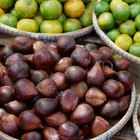
How to Oven-Dry Figs

How to Store Apples
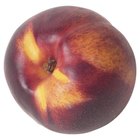
How to Bake Nectarines Like Peaches

How to Wash Blackberries
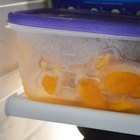
Can You Freeze Apricots?

How to Dry Jujube Fruit
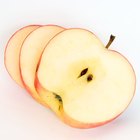
How Long Can You Keep Apples From ...

Fresh Homemade Orange Juice Will Stay ...

How to Dry Pumpkins

How to Reconstitute Dried Cherries
References
Writer Bio
Natalie Smith is a technical writing professor specializing in medical writing localization and food writing. Her work has been published in technical journals, on several prominent cooking and nutrition websites, as well as books and conference proceedings. Smith has won two international research awards for her scholarship in intercultural medical writing, and holds a PhD in technical communication and rhetoric.
Photo Credits
DLeonis/iStock/Getty Images